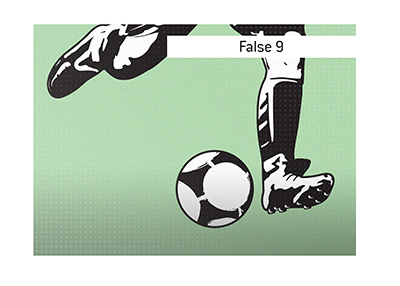Definition of False 9
Featured Offer
Football Betting
Turn £10 Into £30 in Free Bets
Just £10 to start • £30 paid as Free Bets
UK new customers • 18+ • Quick signup
✔ Trusted by millions of UK bettors
Claim £30 Free Bets
Use code THEKING during registration
Bonus Code:
THEKING
Open Account Offer. Bet £10 & Get £30 in Free Bets for new customers at bet365. Min deposit requirement. Free Bets are paid as Bet Credits and are available for use upon settlement of bets to value of qualifying deposit. Min odds, bet and payment method exclusions apply. Returns exclude Bet Credits stake. Time limits and T&Cs apply. Registration required. Bonus code THEKING can be used during registration, but does not change the offer amount in any way. 18+ only. Gamble responsibly.


 When people used to think of a striker, it was often of a player akin to Alan Shearer or Thierry Henry. Players who would stay forward and look to play in and around the box, or otherwise as far forward as possible. It was known as "the 9" due to the traditional numbering system of England.
When people used to think of a striker, it was often of a player akin to Alan Shearer or Thierry Henry. Players who would stay forward and look to play in and around the box, or otherwise as far forward as possible. It was known as "the 9" due to the traditional numbering system of England.